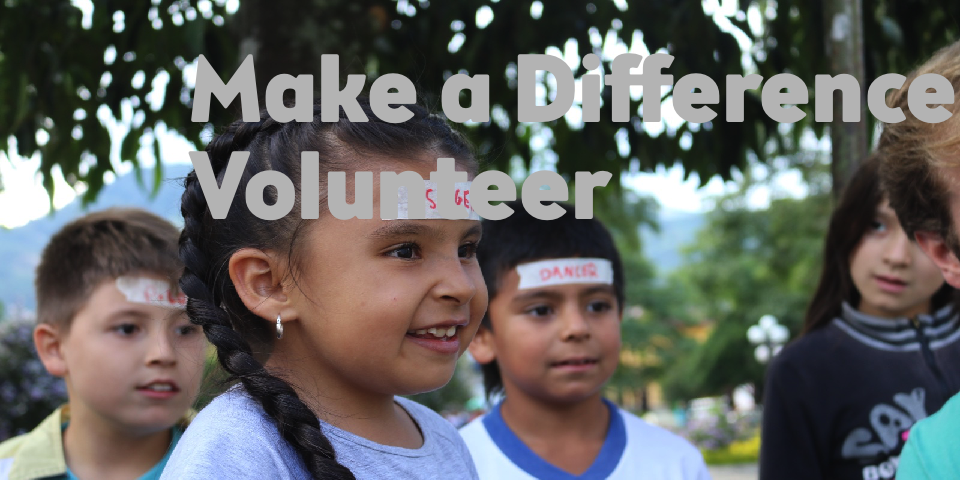Everything has been going SO great!!! We have our four established Explorers: Michael, Mary Joe, Darwin and Luisa. We have still just been giving class in the park which is for them and any other kids who would like to attend.
It’s been different since we have given the Explorers materials– the Passport, the first Scholar “Pokemon” card, lanyards with a plastic case to put the Passport in, and notebooks but if anything I think it’s working as a motivation for the other kids. This program won’t work if we just let any kid be a part of it. We are rewarding those who have showed that they can concentrate, behave well and learn with us and hopefully thereby incentivizing the other students to act like that to be able to become Explorers.
T and D Minimal Pair Exercise
I’m so impressed with how well they did with our first technical pronunciation-based lesson with the fixed group (although Mary Joe arrived late). We did an exercise on the two sounds “T” and “D” in English. These sounds are very different than “T” and “D” in Spanish
The T and D exercise isn’t easy and I’d imagine could be a lot more boring and school-like than a lot of the other things we do. I was so pleased at how focused the group stayed and how well they performed!
We started off about learning about the PLACE, MANNER AND VOICING of the sounds “T” and “D“-
1. Place (part of the mouth the tongue touches)
2. Manner (how the sound is said)
3. Voiced? ( is a voiced sound?)
T– 1. Place– Alveolar ridge
2. Manner– Plosive/Stop
3. Voiced?– No (blows air)
D– 1. Place– Alveolar Ridge
2. Manner– Plosive/Stop
3. Voiced? Yes! (vibrates the throat)
So our tongues touch the same part of our mouth and in the same manner (plosive- denoting a consonant that is produced by stopping the airflow using the lips, teeth, or palate, followed by a sudden release of air- t, d, k, g, p, b.) but the D is voiced and the T isn’t voiced.
T and D are minimal pairs only differing in that the D is voiced and vibrates the throat while the T isn’t voiced and blows air.
Exercises– We had Michael draw this diagram of the mouth on the board-

it came out really well because Michael is the best- 
and the Explorers copied it along with the info in their notebooks. We had them practice holding a paper in front of their mouths as they said “T” and “D” to see when the paper moved from the air coming from their mouths.
*The paper should move when we say “T” and shouldn’t when we say “D“. We also had them feel their throats to feel how the “D” sound makes more of a vibration than the “T” sound. These exercises helped them understand and be able to distinguish between the two sounds in speaking and listening.
Next we did the true test of our ability to differentiate between and identify the “T” and the “D“, writing out words which only differ in one sound: the “T” and the “D“.
For example- to & do, fat & fad, try & dry, dip & tip- etc.
We wrote little numbers next to each word and recited a series of 5 words, having them copy down the corresponding number. This exercise is tricky for the untrained ear. It went really well and we even had the Explorers recite words and we joined the group of those writing the numbers.
Fast forward to the next day (Friday, 12/29, today)- We made a worksheet complete with D words, T words, words with T and D, and sentences with words with T and D.
We played BINGO with minimal pairs. It was SO fun and went so well! We wrote minimal pairs on the white board and had the kids fill in their Bingo spaces with 25 of the 30 words up there. Then Christopher said them and the kids had to mark them off and try to get Bingo. We had some false Bingos which is good, it’s part of the process of distinguishing between minimal pairs. Michael won first…. typical. But we kept playing and let a bunch of kids win! It honestly went better than I could have imagined and I’m so glad we did it!

We’re going to continue with the minimal pairs.The idea is to get all the consonant sounds then short vowel sounds then CVC (consonant, vowel, consonant) words like cat, dog, hat.
Here’s a video of Christopher reciting the list of words we used in Bingo and the kids repeating after him!

